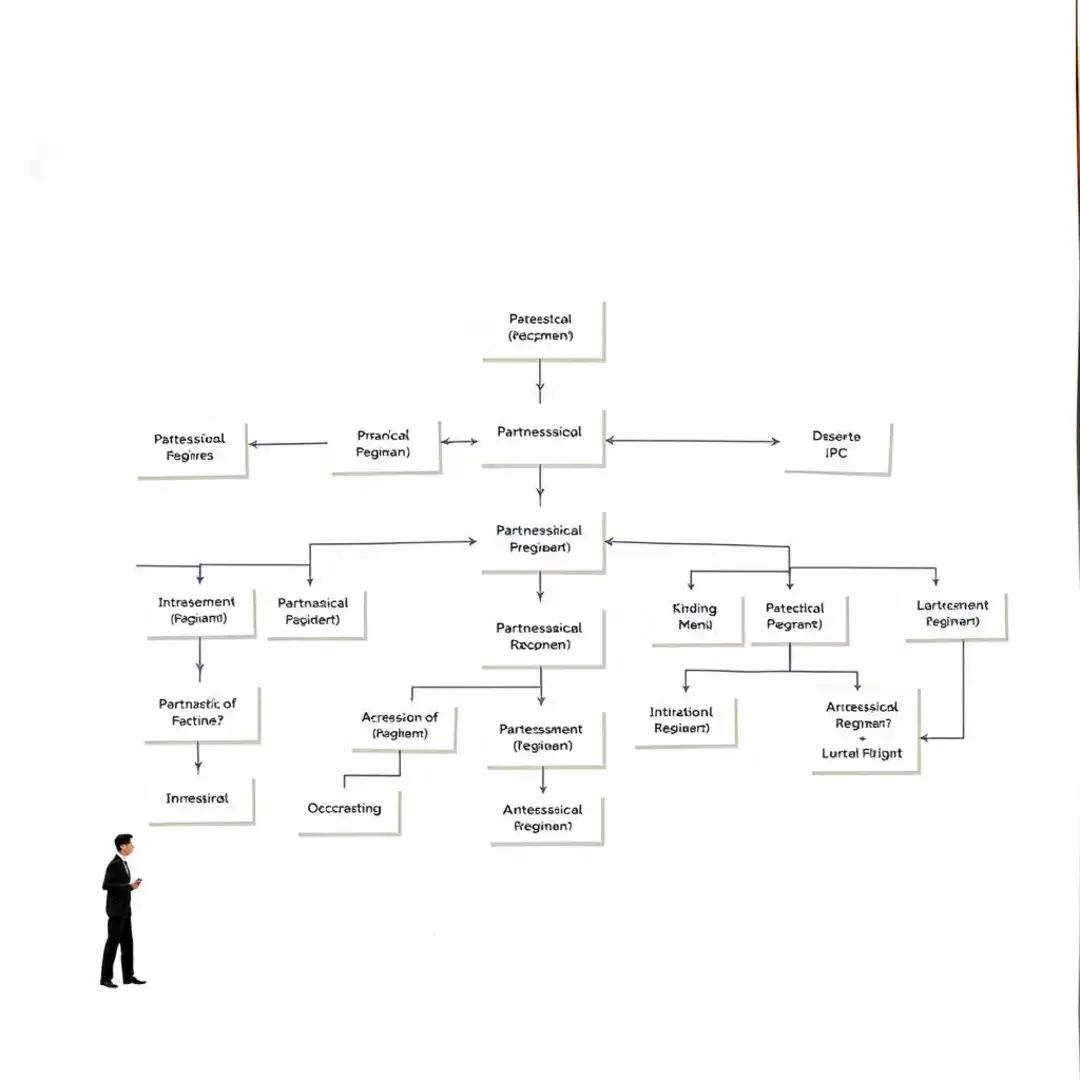Strategies for Decision-Making in Business Partnerships
Understanding the Dynamics of Partnership Decision-Making

Assessing Individual Partner Goals and Values
In any business partnership, understanding the individual goals and values of each partner is crucial for effective decision-making. This involves an open dialogue where each party can express their visions for the partnership and its future. By taking the time to assess these individual objectives, parties can identify common ground that acts as a foundation for collaboration. Regular evaluations of these goals not only ensure alignment but also adapt to any changes, creating a more agile partnership.
Conflicts of interest can arise in any partnership, often stemming from differing priorities or financial incentives. It is crucial to identify these issues early on to prevent future complications. By establishing a process for recognizing conflicts, partners can engage in constructive discussions to address them proactively. This practice not only protects the interests of all partners but also strengthens the trust and cooperation essential for effective decision-making.
When partners work towards a shared vision, the decision-making process becomes more streamlined and aligned. Establishing shared values allows all partners to commit to a common purpose, making it easier to navigate challenges. Regularly revisiting and reinforcing these values can keep the partnership robust and focused, ensuring that all decisions are weighted against a consistent framework.
Communication and Transparency in Decision-Making
Effective communication is the cornerstone of any successful partnership. Open lines of communication not only facilitate informed decision-making but also build trust among partners. Utilizing various communication channels can enhance transparency, allowing all parties to stay informed and engaged in the decision-making process. By fostering a culture of transparency, partners empower each other to express concerns and ideas freely, ultimately leading to better outcomes.
A partnership based on trust is often more resilient and adaptable to changes. Building trust requires consistent, honest communication and a commitment to shared goals. Partners should establish routine check-ins where they can openly discuss ongoing projects, expectations, and any potential roadblocks. This proactive approach to communication not only mitigates risks but also enhances the overall decision-making capability of the partnership.
Feedback is an essential component of decision-making, as it helps in refining processes and approaches. Implementing structured feedback mechanisms can encourage continuous improvement and responsiveness to any challenges. Regular feedback sessions allow partners to understand different perspectives, which can lead to innovative solutions and more effective strategies. Moreover, creating an environment where constructive feedback is valued can set a positive precedent for future interactions.
Formalizing the Decision-Making Process
To ensure clarity in how decisions are made, it’s essential to formalize the decision-making process through a partnership agreement. This agreement should outline the protocols for decision-making, ensuring that all partners are on the same page. By formalizing the process, partners can reduce ambiguity and conflicts, thus leading to more consistent and informed decisions. Clearly documented processes can serve as a reference point that guides partners during challenging discussions.
A well-structured partnership agreement is fundamental in setting the parameters for decision-making. This document should detail the processes for how decisions are made, who has the authority to make them, and the consequences of decisions taken. By having clear protocols in place, partners can minimize the risk of misunderstandings and ensure that all voices are heard in critical discussions.
Clearly defining roles and responsibilities helps in creating accountability among partners. Each partner should understand not only their responsibilities but also how their roles interact with those of others. This clarity reduces the chances of overlap or confusion during decision-making. By distributing responsibilities based on individual strengths and expertise, partnerships can operate more efficiently and effectively.
Advanced Strategies for Navigating Complex Decisions

Utilizing Data-Driven Decision-Making
As business environments become increasingly complex, leveraging data-driven decision-making can provide a competitive edge. By analyzing relevant data, partners can gain valuable insights into market trends, consumer behavior, and operational performance. This information acts as a guide that can inform discussions and lead to more informed decisions. Moreover, data-driven decision-making minimizes guesswork and helps to predict outcomes more accurately.
Understanding market trends and the competitive landscape is vital for making sound strategic decisions. By keeping a pulse on industry shifts and competitors’ actions, partners can anticipate changes and adapt their strategies accordingly. Conducting regular market analyses can identify opportunities for innovation or areas needing improvement, aiding in more proactive decision-making.
Financial data and performance metrics provide essential insights into the health of a partnership. By regularly reviewing these metrics, partners can make informed financial decisions, evaluate investment opportunities, and measure success against established benchmarks. Leveraging such data not only informs current decision-making but also shapes future strategies, ensuring long-term sustainability and growth.
Negotiation and Conflict Resolution Techniques
Partnerships inevitably encounter disputes or disagreements that require negotiation and conflict resolution. Developing effective negotiation strategies can create win-win situations for involved parties, fostering goodwill and long-lasting relationships. It’s important to approach negotiations with an open mind and a willingness to compromise, allowing for creative solutions that benefit all partners.
Negotiation should focus on creating value for everyone involved. Effective strategies include preparing in advance by knowing your partner’s interests and potential concessions. By approaching negotiations collaboratively, partners can explore innovative solutions that maximize benefits for both sides rather than engaging in competitive tactics that create resentment.
Establishing clear conflict resolution mechanisms can significantly reduce the stress associated with disputes. By outlining steps for conflict resolution in the partnership agreement, partners can ensure that there are predefined processes in place to handle issues. This proactive approach helps maintain a healthy partnership dynamic and ensures that disagreements do not undermine the decision-making process.
Adapting to Changing Circumstances
In today’s fast-paced business world, the ability to adapt to changing circumstances is critical for partnerships. Decisions may need to be revisited and revised regularly as new information or changing conditions arise. Building flexibility into the decision-making process allows partners to pivot when necessary, ensuring continued relevance and success.
Creating a resilient decision-making framework involves encouraging adaptability at all levels of the partnership. This includes regularly revisiting strategies and being open to adjustments based on the evolving business landscape. Fostering a culture of flexibility can help partners respond effectively to new challenges and opportunities as they arise.
A partnership agreement should not be static; it should evolve to reflect the changing dynamics of the partnership. Regular reviews ensure that all terms remain relevant and agreeable to both parties. If significant changes occur, revising the agreement can prevent misunderstandings and maintain harmony within the partnership.
Building a Sustainable Decision-Making Framework

Establishing a Culture of Continuous Improvement
Creating a culture of continuous improvement within a partnership encourages both partners to strive for excellence. Regular evaluations of decision-making processes help identify areas for enhancement and innovation. By embedding this mindset into the partnership’s core values, both parties can engage in ongoing learning and adaptation, which is essential for long-term success.
Conducting periodic assessments of decision-making processes can reveal strengths and weaknesses. These evaluations provide a platform for feedback and discussion among partners, offering insights into how decisions have been made and their impact. This reflective approach not only fosters improvement but also reaffirms commitment to shared goals.
Incorporating external feedback can bring fresh perspectives to decision-making processes. Engaging with mentors, industry peers, or consultants can expose partners to benchmarking opportunities and best practices. By learning from the experiences of others, partnerships can refine their approaches and avoid common pitfalls.
Succession Planning and Long-Term Vision
Successful partnerships require foresight and a strategic approach towards succession planning. Identifying future leaders and decision-makers ensures continuity and stability when partners change or exit. By developing clear succession plans, partnerships safeguard their future and maintain alignment with their long-term vision.
A succession plan outlines how future transitions in leadership will occur, minimizing disruptions in decision-making. It should identify potential successors and the criteria required for their advancement. Effective succession planning not only prepares the partnership for unforeseen changes but also cultivates an environment of growth and development.
All decisions made within a partnership should align with its long-term vision. This alignment ensures that short-term actions contribute to long-term goals. Regular discussions centered around this vision can help maintain focus and prevent distractions from core objectives, ultimately making strategic decision-making more effective.












